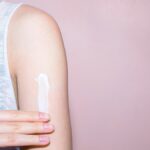Monsoon drizzles give the much-needed relief from the scorching heat of May and June. Along with the monsoon showers come various types of skin allergies that leave your skin irritated and prone to breakouts. The constant humid and moist weather creates the perfect breeding environment for several fungal and other allergy-causing microbes. Therefore, it is important to know the different types of monsoon skin allergies and how to prevent them. These skin allergies are fairly common during the monsoon and leave your skin feeling dry, red, and itchy.
The blog covers these monsoon skin allergies in detail and gives you a brief overview of various tips on dealing with these allergies. Being aware of the different types of monsoon skin allergies and how to prevent them helps you take a proactive approach in dealing with these allergies. All the skin allergies are discussed in great detail to keep all the allergies at bay. You can follow the recommended changes and tips to ensure healthy and glowing skin throughout the rainy season.

Most Common Skin Allergies Noticed During Monsoon
Monsoons bring a sudden shift in the environment that causes your skin to become eczematic. Mostly it affects the skin and its ability to retain moisture making it blistered, red, itchy, and dry. The constant humidity in the environment affects the areas with folds, such as the back of the knees, the inside of the elbows, and the space between the toes or fingers. These areas sweat the most and may become prone to skin allergies in the monsoon. Here are different types of monsoon skin allergies that you may face in this warm and humid weather.
Facial Folliculitis
Excessive sweating in monsoons with a humid environment clogs your pores and causes facial folliculitis. It can also be caused by bacterial or fungal infections. The white-headed pimples or tiny red bumps, as well as pus-filled blisters that break open and leave the skin itchy or burning, are a few signs that you may be struggling with Facial Folliculitis. However, with the right precautions and safety measures, it can be easily treated or avoided.
Eczema
Eczema or atopic dermatitis is a common skin allergy characterized by dry, itchy, red, swollen, and cracked skin. The increased humidity and moisture in monsoon creates a thriving environment for the growth of fungi responsible for causing eczema or other skin infections.
The monsoon season also brings along allergens like mold, dust mites, and pollen which can irritate your skin and cause eczema. With proper hygiene and precautions, you can easily avoid eczema or prevent its further spread to other body parts.
Athlete’s Foot
The Athlete’s Foot is a common skin allergy noticed in monsoon in the areas around the feet and the toenails. This contagious fungal infection causes itching and develops blisters. The skin allergy usually begins between the toenails and is more common in people whose feet have become very sweaty while confined within tight-fitting shoes. It is caused by the fungi i.e. Trichophyton rubrum, T. mentagrophytes, T. interdigitale, Epidermophyton floccosum, and T. tonsurans.
Scabies
Another common skin allergy seen in monsoon is scabies. This infectious or contagious skin allergy is caused by the parasitic mite Sarcoptes scabiei which causes rash and intense itching. It is a common skin allergy in the monsoon and can be caused by increased contact with contaminated water. If not treated on time it can lead to health complications like septicemia, heart disease, and kidney problems.
Useful Tips to Prevent Different Types Of Monsoon Skin Allergies
Though it can be a bit difficult to deal with monsoon skin allergies, there are several tips that can be helpful in preventing skin allergies altogether. Here are several useful you can adapt in your lifestyle to combat skin allergies and give your skin relief from the irritating symptoms.
- The humid temperature in monsoon is prone to cause more sweating. You can deal with this challenge by wearing more breathable, loose, cotton clothes.
- To avoid excessive sweating in areas such as the feet, groin, and toes you can use antifungal powder. It prevents sweating and keeps your skin clean and dry.
- Another useful tip for managing skin allergies during monsoon season is to take extra care of your hygiene. Use an antibacterial soap and keep your skin free from any fungus or bacteria.
- Avoid using makeup and other chemical-based skin care products to prevent clogging your pores. This helps avoid acne and other breakouts.
- Stay hydrated and drink plenty of water, 7-8 glasses per day to prevent acne breakouts, fight skin infections, remove humidity, and flush out toxins from the body.
Conclusion
Fighting skin allergies is a common issue in monsoon and can make your skin irritated and itchy. This blog helps you learn more about the different Types Of Monsoon Skin Allergies and How To Prevent Them. It also gives you invaluable insights on various tips for managing skin allergies through lifestyle changes.




